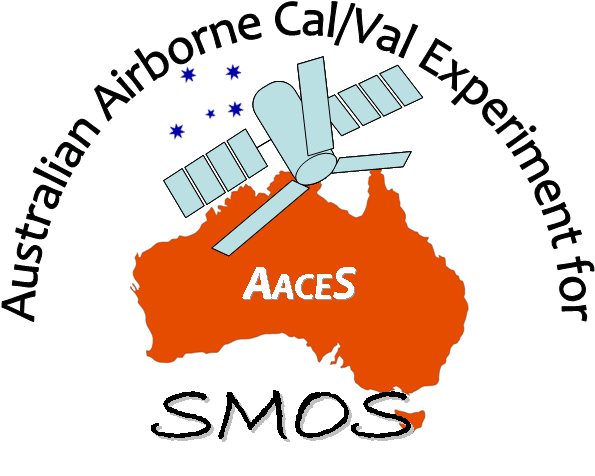

 |
Welcome to the | |
 |
AACES-1 Project | |
| Australian Airborne Cal/val Experiment for SMOS |
|
Home page
Google Earth (KML file) Workplan SMOS AMSR-E WindSat ASCAT PALSAR ASAR MODIS MTSAT-1R ASTER Landsat CHRIS AVNIR-2 PLMR data Thermal Infrared data Multi-Spectral data Monitoring stations Soil moisture sampling Vegetation sampling Roughness sampling Campaign shapefiles DEM Land use Climate data Rainfall data Soil classification Soil water capacity Soil texture analysis AACES homepage Moisturemap homepage |
Phased Array L-band Synthetic Aperture Radar (PALSAR) Source: http://spacespin.org, access on 28th, Apr. 2010
Source: http://spacespin.org, access on 28th, Apr. 2010
 Source: http://www.eorc.jaxa.jp, access on 28th, Apr. 2010 (modified)
Source: http://www.eorc.jaxa.jp, access on 28th, Apr. 2010 (modified)
 Source: http://www.alos-restec.jp, access on 28th, Apr. 2010
Source: http://www.alos-restec.jp, access on 28th, Apr. 2010
The PALSAR is an active microwave sensor aboard the Advance Land Observing Satellite (ALOS). The sensor operates at L-band with HH and VV polarisation (HV and VH polarisations are optional). The sensor is beam steerable in elevation and the ScanSAR mode allows obtaining a wider swath than conventional SARs. ALOS was launched in 2004 into a sun-synchronous orbit at the altitude of 700km, providing a spatial resolution of 20m for the fine resolution mode (swath width of 70km) and 100m for the ScanSAR mode (swath width of 360km). The repeat cycle is 46 days and the local time at descending node is about 10:30am. PALSAR data can be downloaded from ERSDAC.
PALSAR full beam mode product overpass timePALSAR coverage for the Murrumbidgee Catchment during the first AACES campaign have been determined from a Fortran program based on NORAD data for 6th, Nov. 2009, and are summarized in the table below. Date and time are in UTC. Aircraft flights were assumed to be conducted at 7:45 for descending overpass and 20:35 for ascending overpass.
|
|||||||||||||||||||||||||||||||||||||||||||||||||||||||||||||||||||||||||||||||||||||||||||||||||||||||||||||||||||||||||||||||||||||||||||||||||||||||||||||||||||||||||||||||||||||||||||||||||||||||||||||||||||||||||||||||||||||||||||||||||||||||||||||||||||||||||||||||||||||||||||||||||||||||||||||||||||||||||||||||||||||||||||||||||||||||||||||||||||||||||||||||||||||||||||||||||||||||||||||||||||||||||||||||||||||||||||||||||||||||||||||||||||||||||||||||||||||||||||||||||||||||||||||||||||||||||||||||||||||||||||||||||||||||||||||||||||||||||||||||||||||||||||||||||||||||||||||||||||||||||||||||||||||||||||||||||||||||||||||||||||||||||||||||||||||||||||||||||||||||||||||||||||||||||||||||||||||||||||||||||||||||||||||||||||||||||||
|
Created: January 2010 Last Modified: August 2010 Maintainer: YE Nan, Ye.Nan@monash.edu |